Quick Summary
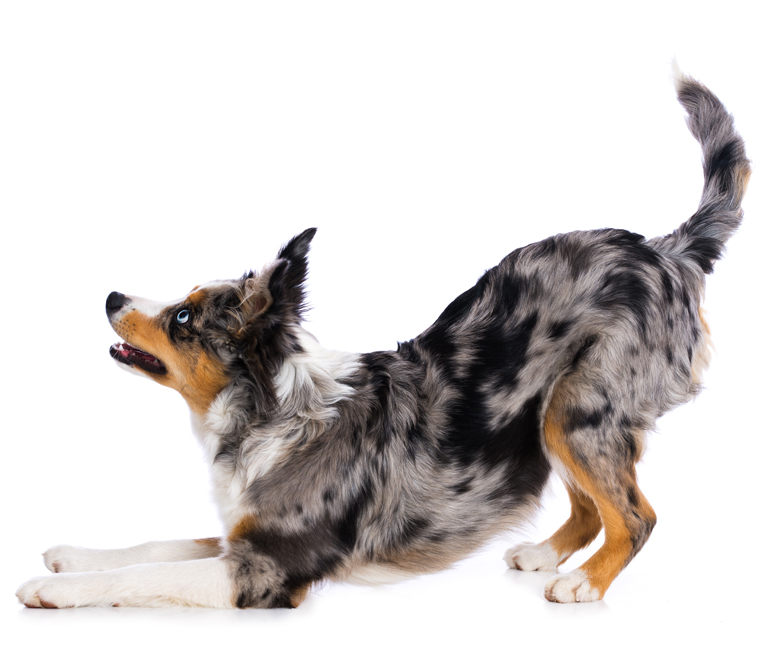
Click here for Price and Turnaround Time
Phenotype: The merle pattern is characterized by irregularly shaped patches with diluted pigment while other patches on the coat are fully pigmented in color.
Mode of Inheritance: Incomplete dominance
Alleles: N = Non-merle, ### = Merle allele present, size is provided
Breeds appropriate for testing: Many breeds including but not limited to: American Bully, American Pit Bull Terrier, American Staffordshire Terrier, Australian Shepherd, Beauceron, Bergamasco, Border Collie, Cardigan Welsh Corgi, Catahoula Leopard Dog, Chihuahua, Cockapoo, Cocker Spaniel (American), Collie, Dachshund, Dunker, French Bulldog, Great Dane, Koolie, Mudi, Old English Sheepdog, Pomeranian, Pyrenean Shepherd, Shetland Sheepdog, Crossbred
Explanation of Results:
- Dogs with N/N genotype are not expected to display a merle pattern. They cannot transmit this merle variant to any of their offspring.
- Dogs with N/### or ###/### (### = any number from 200-280) may display a merle pattern. This pattern varies along a continuum. The amount of dilute patches is dependent on which merle allele(s) are present AND if the dog will show black/brown pigment (eumelanin) = NOT e/e at MC1R. In brief, eumelanic dogs with two copies of smaller allele sizes (lower numbers) display little to no merle pattern often referred to as "cryptic merle". Eumelanic dogs with 1 or 2 copies of larger alleles (higher numbers) are expected to display the merle pattern. Eumelanic dogs with one or two copies of the highest numbers (~270-280) display a dramatic dilution/white pattern referred to as harlequin. This is NOT the phenotype resulting from the gene variant identified as Harlequin (H) in the Great Dane. Breeding two dogs that possess any of the merle variants may produce "double merle" offspring (homozygous) which may be prone to health problems. Double merle dogs may have auditory, ophthalmologic, skeletal, and other defects and will transmit a merle variant to all of their offspring.
- Dogs with N/###/### or ###/###/### (### = any number ranging from 200-280) have an additional merle allele likely resulting from the propensity of the repetitive DNA causing the merle phenotype to increase or decrease in size. Each individual cell still only has two copies. However, different cells of the body may have different sizes of alleles. The phenotypic impact of the additional allele cannot be predicted as distribution throughout the body may be variable. Similarly, it is possible for all alleles to be transmitted to offspring but depends on the alleles present in the egg and sperm cells, thus the heritability cannot be predicted.
Results of this test can be submitted to the OFA (Orthopedic Foundation for Animals)
Sample Collection
Dog DNA tests are carried out using cells brushed from your dog's cheeks and gums. The preferred cytology brushes are sent to you by mail, or you may provide your own brushes. For accepted alternative brushes, click here
We recommend waiting until puppies are at least three weeks old before testing.
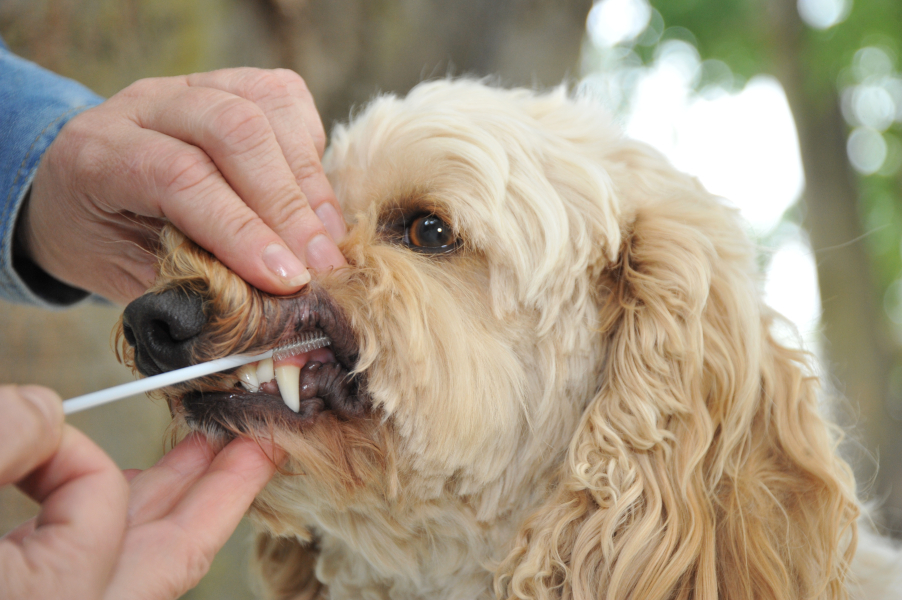
Step-By-Step:
- Make sure the dog has not had anything to eat or drink for at least 1 hour prior to collecting sample.
- When swabbing puppies, isolate each puppy from the mother, littermates and any shared toys for 1 hour prior to swabbing. Puppies should not have nursed or eaten for 1 hour prior to collecting sample.
- If collecting samples from more than one dog, make sure to sample one dog at a time and wash your hands before swabbing another dog.
- Label brush sleeve with name or ID of dog to be sampled.
- Open brush sleeve by arrow and remove one brush by its handle.
- Place bristle head between the dog’s gums and cheek and press lightly on the outside of the cheek while rubbing or rotating the brush back and forth for 15 seconds.
- Wave the brush in the air for 20 seconds to air dry.
- Insert brush back into sleeve.
- Repeat steps 5 - 8 for each unused brush in sleeve on a fresh area of cheek and gums. Make sure to use and return all brushes sent by the VGL. In most cases, it will be 3 brushes per dog. If using interdental gum brushes, please note that the VGL requires 4 brushes per dog and only moderate or wide interdental gum brushes are accepted.
- Do not seal brushes in sleeve.
- Place all samples in an envelope and return to the address provided.
ATTENTION:
- Do not collect saliva/drool – the key to obtaining a good sample is getting cheek cells on the swab
- Do not rub swab on the dog’s tongue or teeth – this will result in poor quality sample
- Do not collect a sample from a puppy that has recently nursed – the mother’s genetic material can rub off on the puppy’s mouth and contaminate the sample
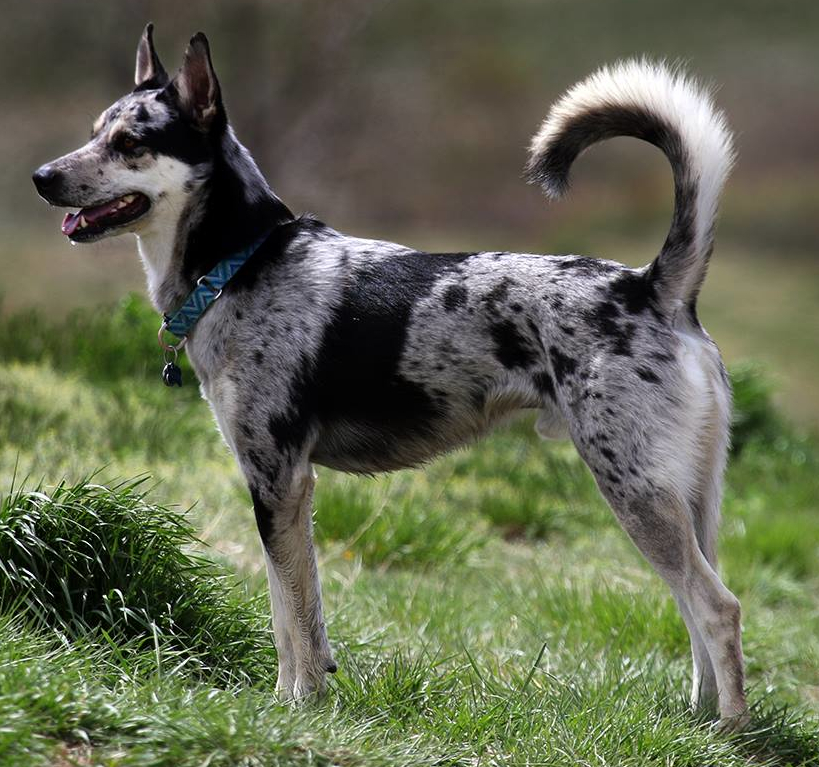
The merle pattern is characterized by irregularly shaped patches with diluted pigment while other patches on the coat are fully pigmented in color (solid). Merle only dilutes eumelanin (black) pigment; dogs with an MC1R e/e genotype do not produce black pigment and thus do not express merle, but can produce merle offspring depending on the genotype of the mate. Merle is governed by a SINE insertion in the PMEL17 or Silver (SILV) gene. SINEs are defined as short interspersed nuclear elements. These are repetitive DNA sequences that can copy and insert into different locations in the genome. The impact of the insertion depends upon the location: they can impact gene expression and function and, if inserted into the germ line cells, can be passed down to future generations.
The presence or absence of the merle SINE insertion determines the possibility of observing the merle phenotype while the length of the end of the SINE insert sequence, which is composed of the nucleotide A (poly-A tail), correlates to the extent of the merle pattern observed. Only one copy of the merle associated variant is necessary to see the effects but the length of the tail directly influences the phenotype.
The length of the poly-A tail can vary by as much as 80 nucleotides. When originally identified, range of sizes were grouped into three categories with 4 results: no SINE insertion= N, short poly-A tail= Mc (cryptic merle aka phantom or ghost and merle phenotype may or not be observed), longer poly-A tail = M (the merle pattern always observed), and an undefined region between long and short where merle pattern prediction was inconsistent. Until September 9, 2020 the VGL reported these as N, Mc, or M.
Further investigations by multiple, independent, researchers have refined the phenotypic correlation with the poly-A tail length. The following figure shows the allelic ranges and nomenclature defined by each research study. The nomenclature differs by study. Many variables likely contributed to the varied ranges and nomenclature some of which is dependent on sample sizes, breeds used, ascertainment bias, etc.
Given the variation that exists in the scientific literature for allele nomenclature the VGL now reports merle alleles based on size instead of by allele designation (please see Figure 1). This allows animal owners to utilize these numbers with the naming scheme they prefer.
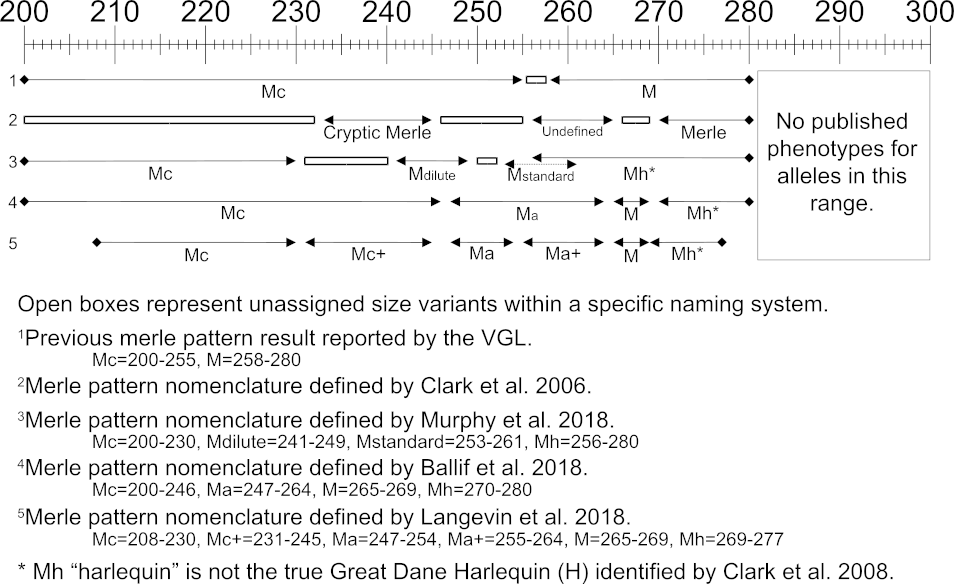
Figure 1: Merle Allele Nomenclature Defined by Multiple Scientific Studies. The VGL reports merle as the size of the detected allele. The figure demonstrates the different proposed nomenclature based on the reported allele size.
Dogs with cryptic merle (also called phantom or ghost merle) typically display little to no merle pattern and some may be misclassified as non-merles. The cryptic merle alleles occur in the lower end of the range (typically from 200-255, however, this range and designation varies by study). As the length of the poly-A tail increases, the degree of eumelanin dilution increases to produce the merle pattern with the highest end of the range producing a phenotype that can be completely white (around 280 bp). In dogs with merle, this has been referred to harlequin or merlequin. It is important to note that the merle derived “harlequin” is distinct and caused by a different genetic mechanism from Great Dane Harlequin (H).
The merle poly-A tail is genetically unstable and, although uncommon, parents and offspring may have different sizes and thus different genotypes. Despite claims to the contrary, exhaustive sampling and testing at the VGL has identified heritable expansion and contraction of the merle insert in offspring where parentage testing has been confirmed. Also, in rare cases, the poly-A tail may expand in some cells leading to the appearance of three alleles in one animal. The distribution throughout the body of cells with differing allele sizes depends upon the timing of the origin of the expansion or retraction of the poly-A during development. If early in development, two distinct populations of cells may be present throughout the dog. If later, the appearance of two populations of cells may be restricted to specific tissues.
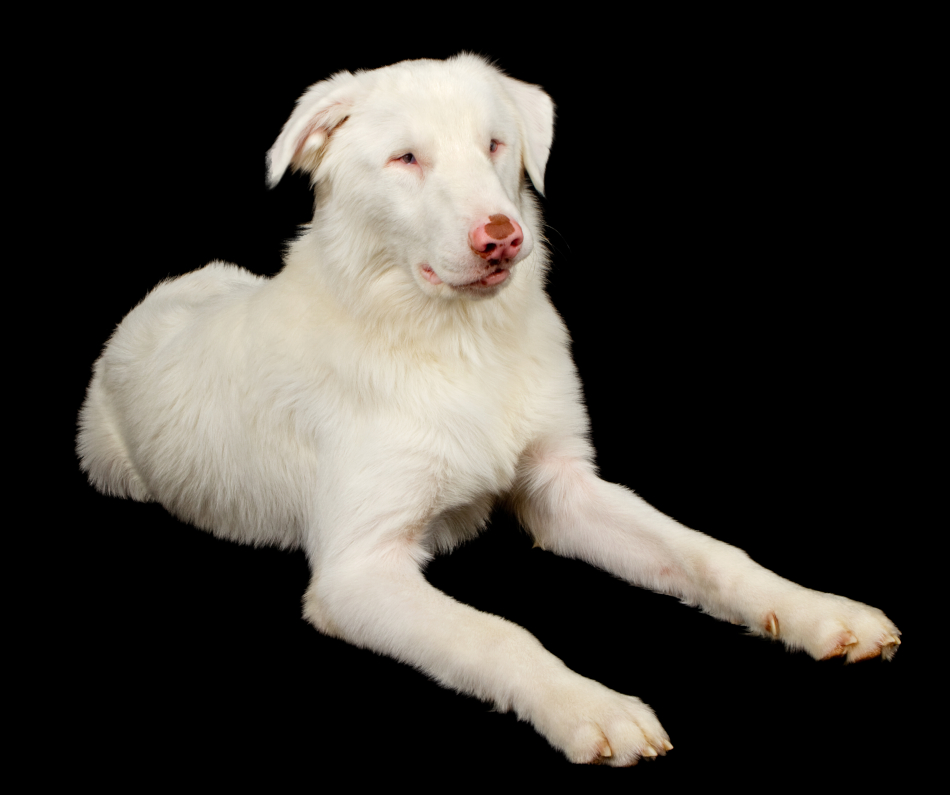
Blue and partially blue eyes are typically seen with merle, and merle dogs may possess a wide range of auditory and ophthalmologic defects. Dogs with two copies of any of the size variants consistent with merle (alleles other than N) are called double merles and often can have an all white coat accompanied by multiple abnormalities of skeletal, cardiac, and reproductive systems, therefore breeding two merle dogs is discouraged to avoid producing double merle offspring. However, it is important to consider that many double merle dogs with ophthalmic and auditory defects often have a white spotting component and double merles in a breed with low piebald spotting allele frequency such as Catahoula leopard dogs, have fewer noted auditory and ophthalmologic defects.
Because of the complexities of merle inheritance and potential health concerns, DNA testing is recommended to establish the genetic makeup of dogs for the merle gene for those breeds where this color dilution pattern is present.
